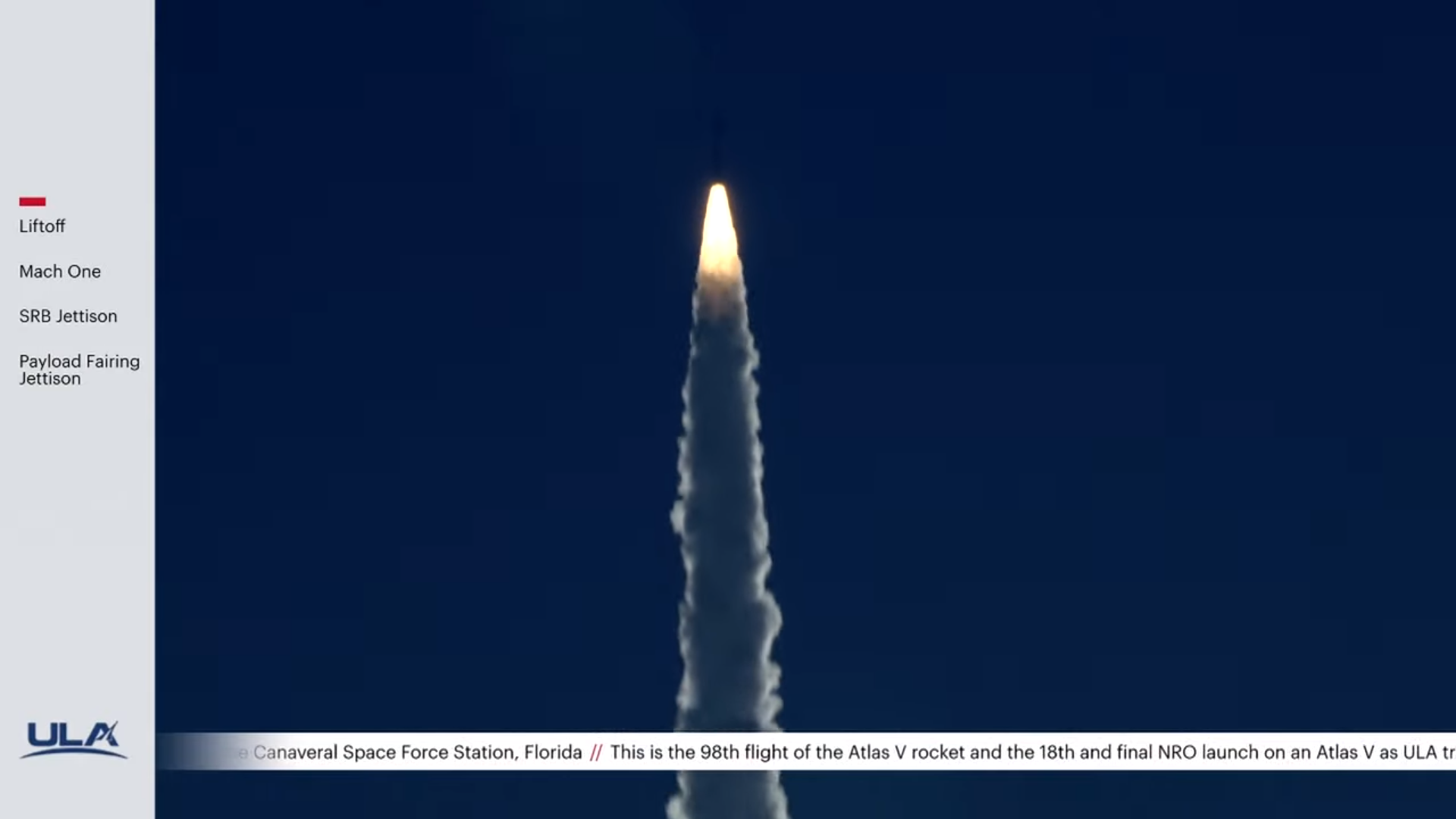
Leaping foxes may be one thing, but leaping Atlas Vs are something else entirely, as a mission which has waited longer than most for its chance to fly finally went airborne early Sunday. A United Launch Alliance (ULA) “Mighty Atlas”—call it the “551”, if you will, although CEO Tory Bruno prefers to identify this beast of a rocket as “the bruiser”—roared aloft from historic Space Launch Complex (SLC)-41 at Cape Canaveral Space Force Station, Fla., at 8:47 a.m. EDT, nearly two weeks after a previous launch attempt was scuppered by the Category Four ravages of Hurricane Idalia.
Launch of the Mighty Atlas’ final National Reconnaissance Office payload was initially targeted for the morning of 29 August, but Idalia soon put paid to those hopes. First observed in the final days of last month as a “trough” of low pressure, offshore of the coastline of Central America, it quickly organized into a tropical depression and by the 29th was a Category One hurricane, rapidly reaching Category Two, Three and Four before the month’s end, with sustained winds of 130 mph (215 km/h).
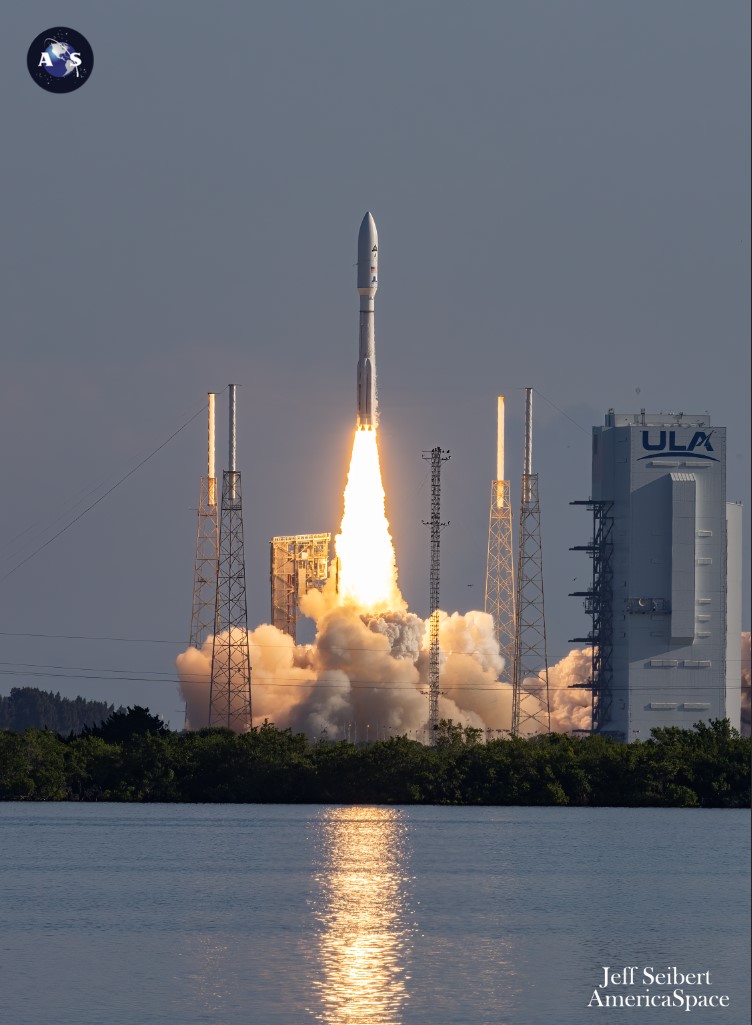
Photo credit: Jeff Seibert/AmericaSpace
ULA correspondingly stood down from launching the 196-foot-tall (59.7-meter) Atlas V and elected to roll the booster off the SLC-41 pad surface and along its rails across the quarter-mile (400-meter) distance to the Vertical Integration Facility (VIF) to wait out the weather. Finally, on Wednesday ULA and the National Reconnaissance Office announced a new T-0 of 8:51 p.m. EDT Saturday.
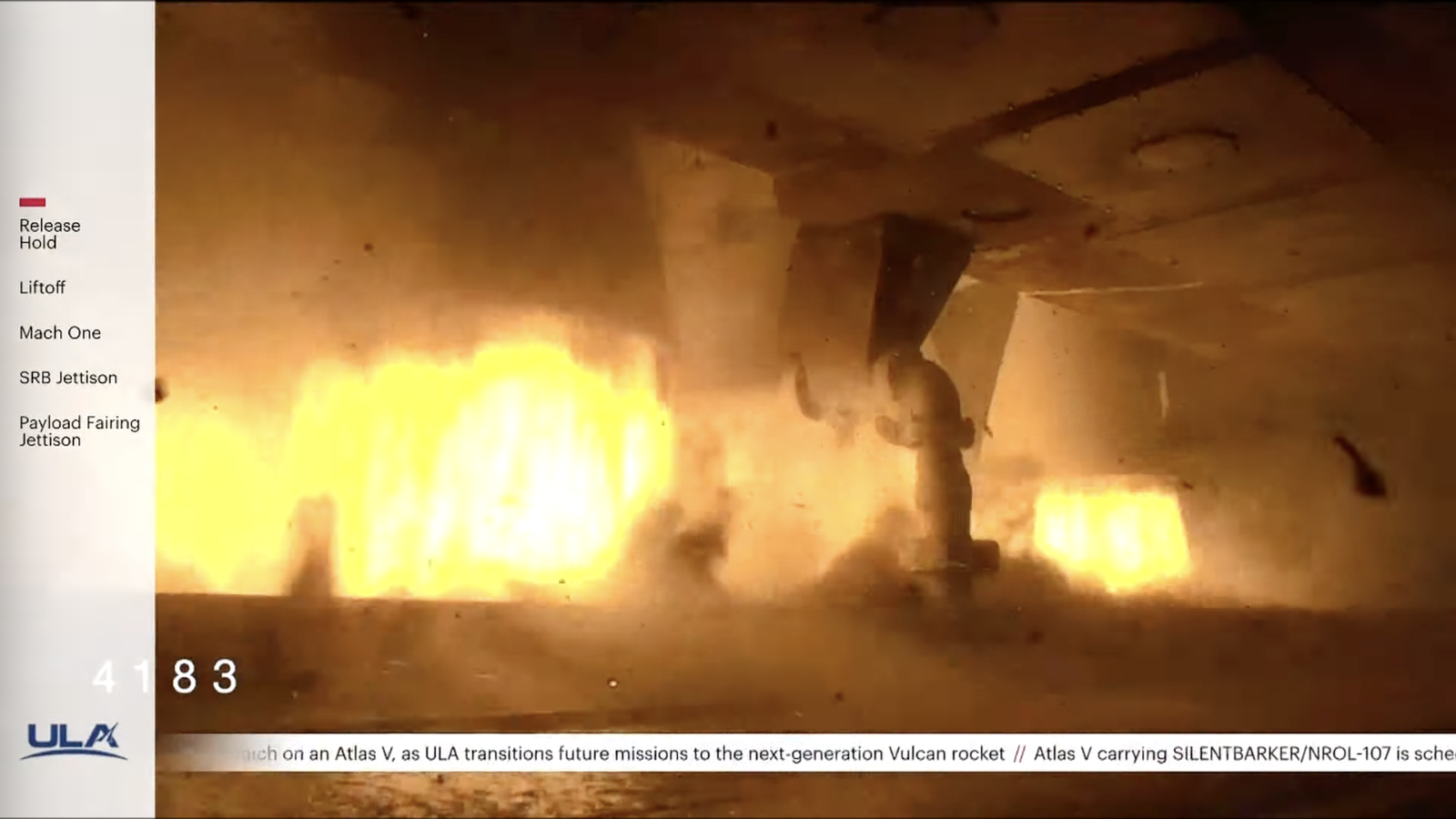
But two weeks of delay is relatively small fry, compared to the many years that the Mighty Atlas’ primary payload—the highly classified NROL-107, saddled with the curiously cumbersome nomenclature of “Silent Barker”—has waited in the wings for its chance to fly. Contracts to launch it were awarded to ULA back in February 2019 as part of a three-mission Atlas V deal with the Air Force, worth an estimated $441.76 million.
Under the terms of that contract, part of the Air Force’s Phase 1A procurement strategy, two other missions—the fifth and sixth geostationary members of the Space-Based Infrared System (SBIRS GEO-5 and GEO-6)—later made it safely to orbit in May 2021 and August of last year, respectively. But Silent Barker, originally baselined to fly in Fiscal Year 2022 from the East Coast, but postponed substantially into this year’s third quarter, has proven stubbornly more irksome to get off the ground.
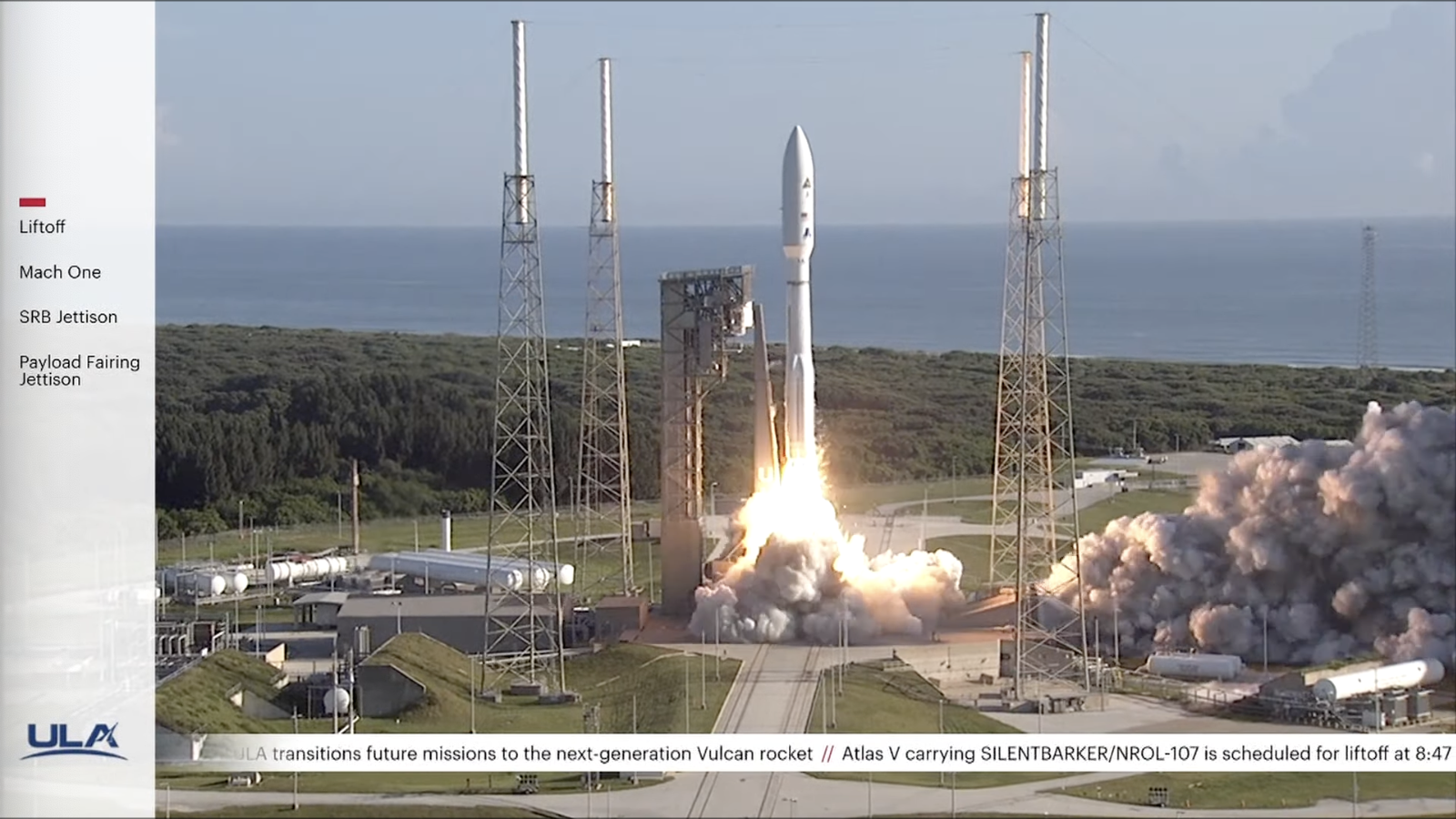
The exact nature of what kept it on the ground has proven hard to pin down. But last fall, a payload-related issue required the Silent Barker spacecraft to be returned to its manufacturer for attention.
What is known is that Silent Barker is targeting insertion into Geostationary Earth Orbit (GEO), at an altitude of 22,300 miles (35,900 kilometers). It has been identified as a powerful Space Domain Awareness (SDA) mission, executed jointly between the NRO and the Space Force’s Space Systems Command (SSC).
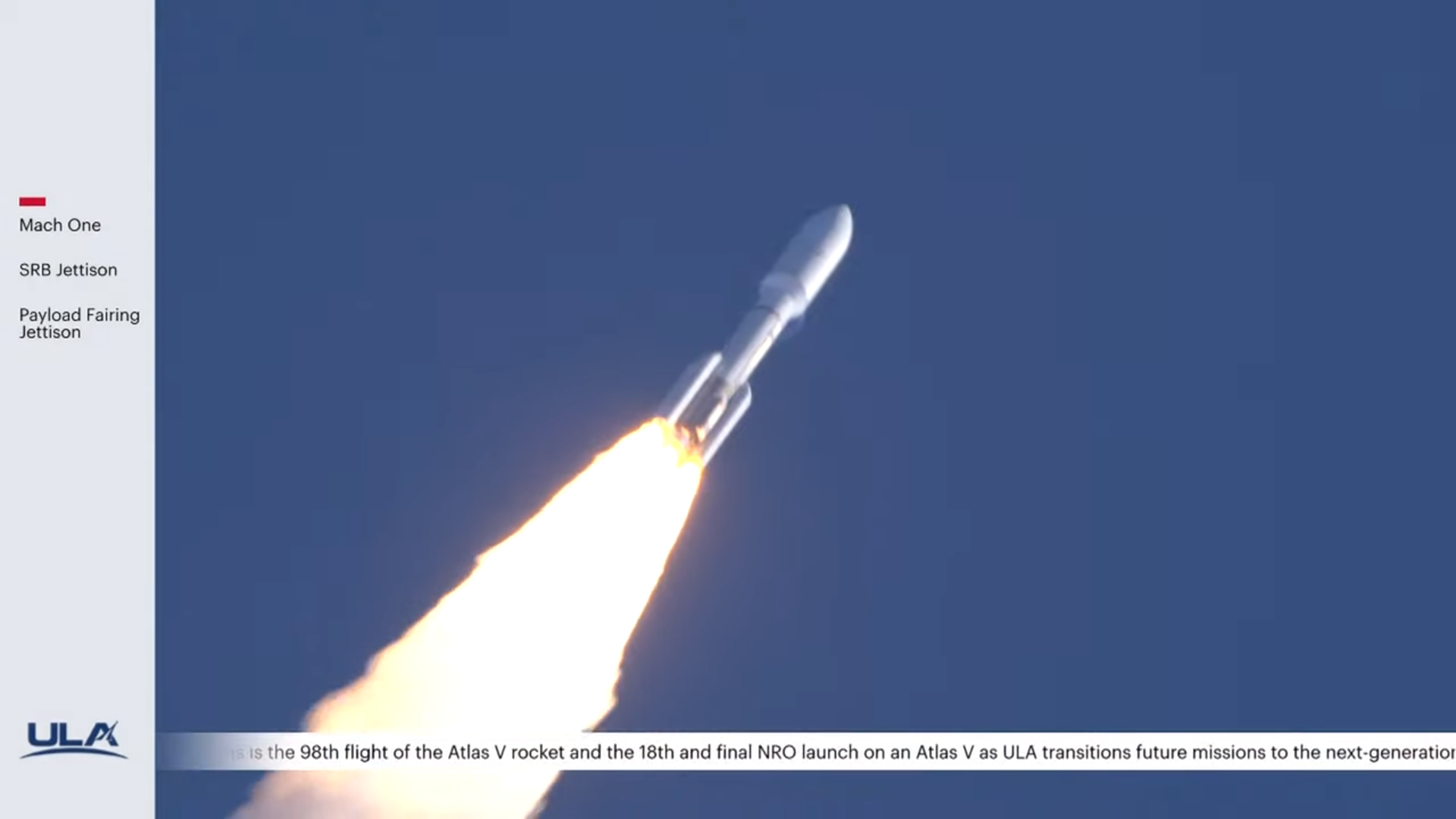
“Silent Barker is designed to detect and maintain custody of space objects,” explained ULA. “Silent Barker will provide the capability to search, detect and track objects from space-based sensors for timely custody and event detection.
“Surveillance from space augments and overcomes existing ground-sensor limitations with timely, 24-hour, above-the-weather collection of satellite metric data, only possible with a space-based sensor,” it continued, “and then communicates its findings to satellite operators, analysts and other mission users.”
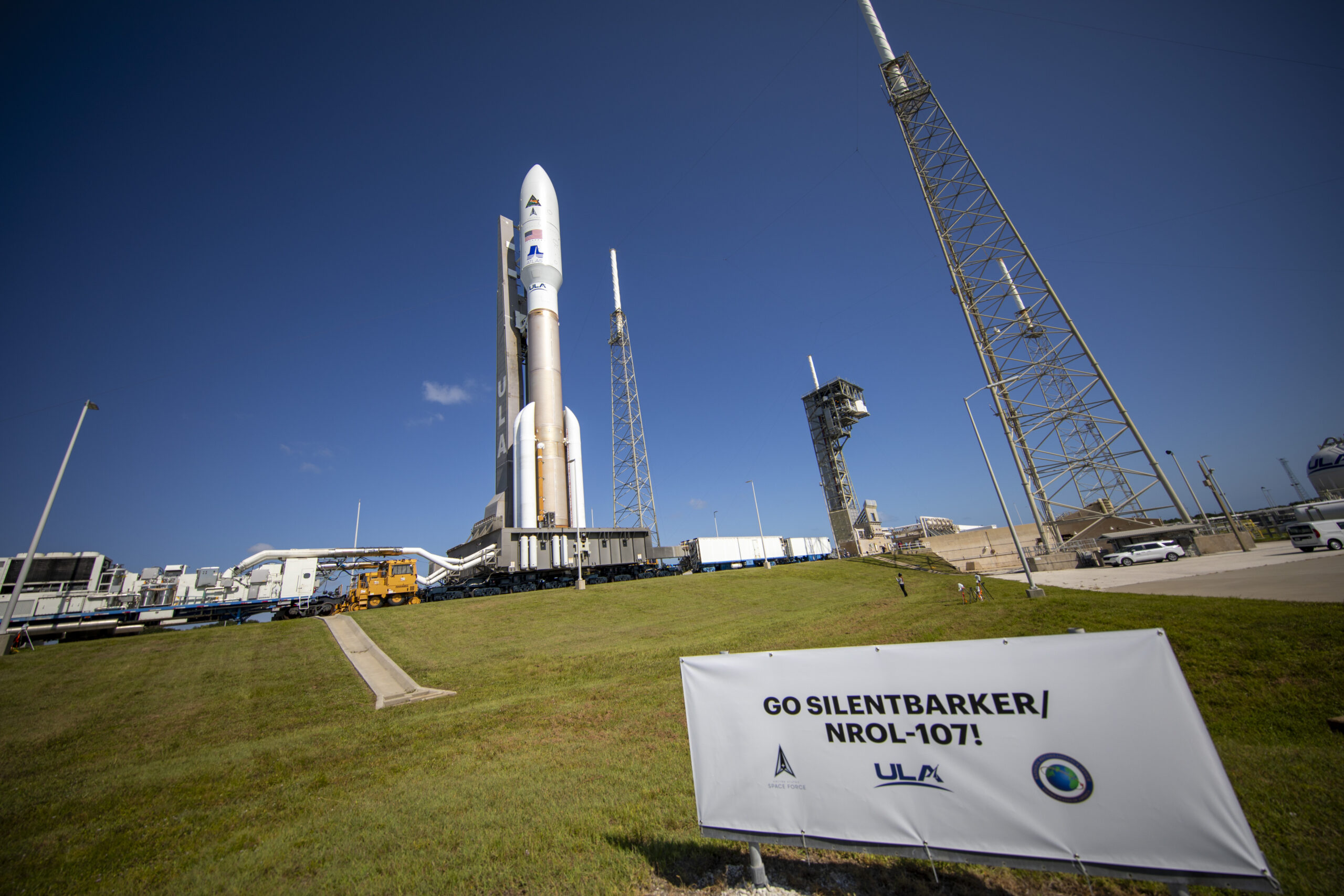
The mission’s patch symbology—a leaping fox—alludes to Silent Barker’s overall objective. “The leaping fox,” tweeted the NRO in August, “portrays the agility and clever intelligence that gives us an edge over adversaries.”
Stacking of Atlas V hardware for this critical national security mission got underway on 13 July, when the 107-foot-long (33-meter) Common Core Booster (CCB) was elevated to a vertical configuration atop the Mobile Launch Platform (MLP) inside the Vertical Integration Facility (VIF), adjacent to SLC-41. A week later, Northrop Grumman’s five GEM-63 boosters—each of which will generate 371,500 pounds (168,500 kilograms) of thrust at liftoff—were mounted around the CCB’s base, to complete the initial structural build-up of the lowermost portion of the Mighty Atlas.
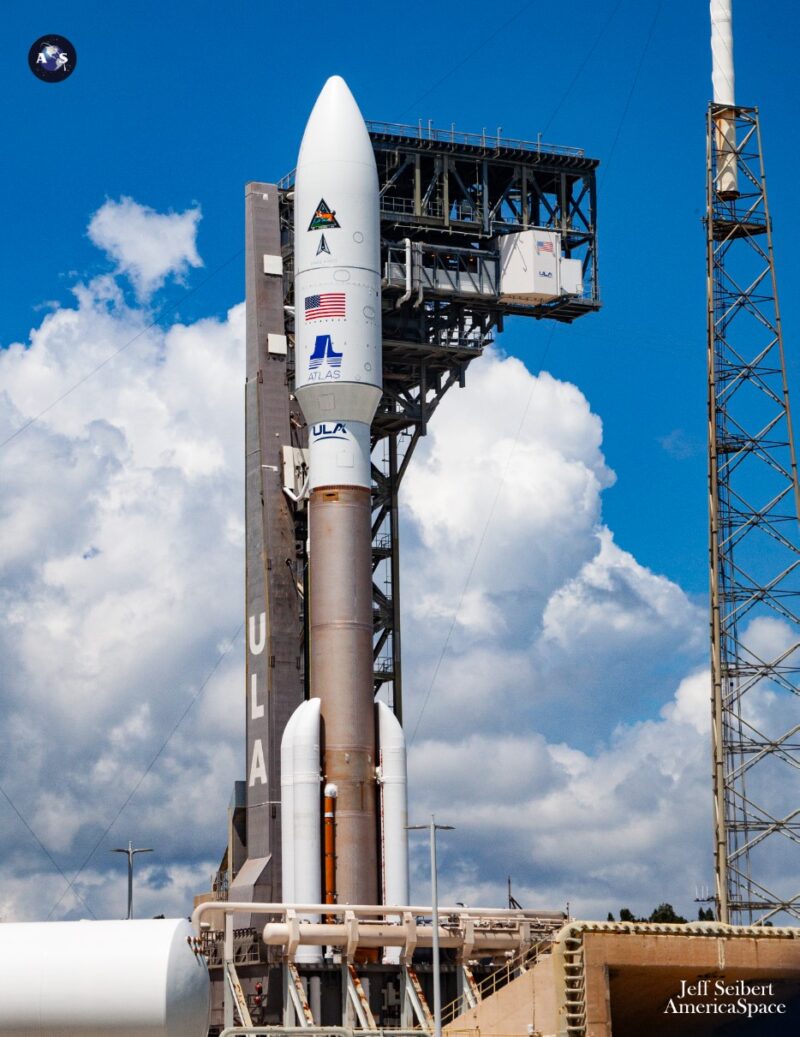
All told, and when combined with the CCB’s Russian-built RD-180 engine, they powered the Silent Barker mission off SLC-41 with a total impulse in excess of 2.3 million pounds (1.4 million kilograms). The 41.5-foot-long (12.6-meter) Centaur upper stage was added to the stack on 24 July and early last month ULA teams conducted a Wet Dress Rehearsal (WDR), rolling the stack—minus its payload—out to SLC-41 and loading it with over 66,000 gallons (300,000 liters) of liquid oxygen and hydrogen propellants.
Already, the Atlas V had been earlier loaded with 25,000 gallons (94,000 liters) of “storable” kerosene and the WDR also furnished ULA and opportunity to wring out the Atlas V’s stages, avionics and ground systems. The test proceeded until a scheduled cutoff point, just ahead of RD-180 ignition before the rocket returned to the VIF.
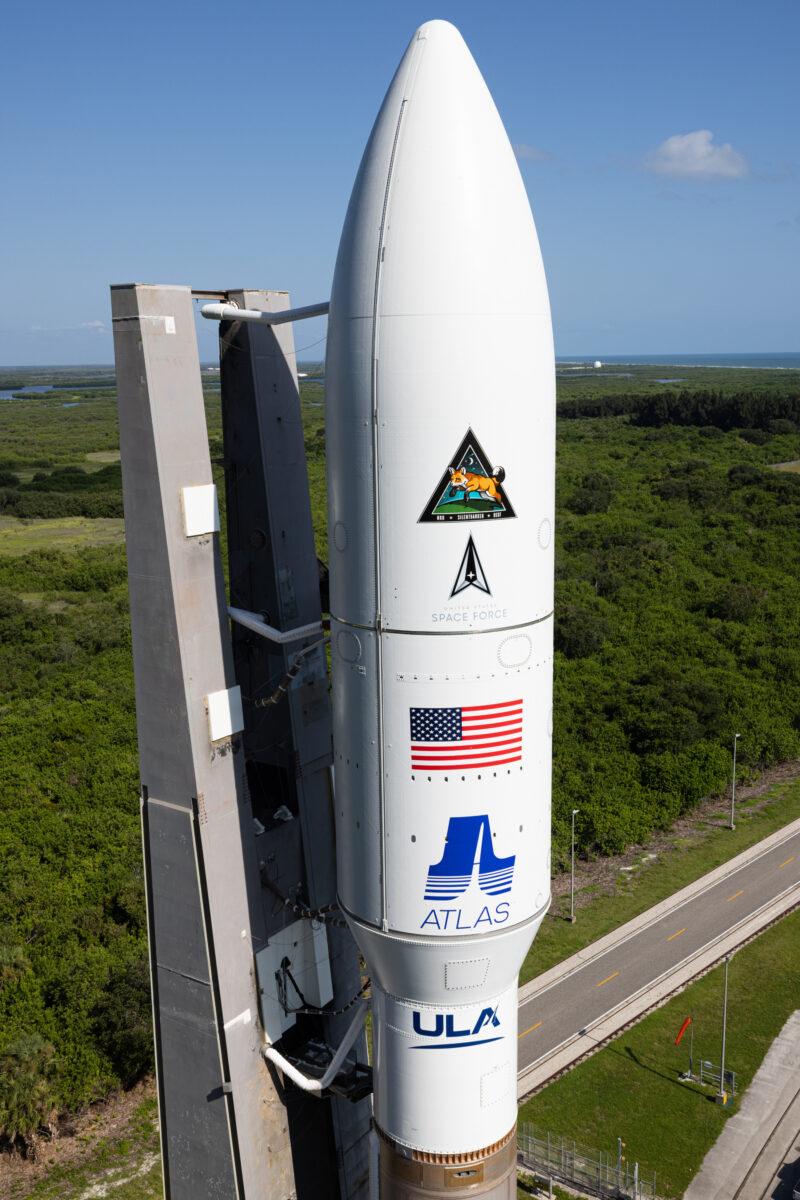
Last month, the Short Payload Fairing (SPF)—a bullet-like structure which encapsulates Silent Barker and protects it during the high dynamism of launch and ascent—was transported to the VIF and hoisted atop the stack. The Atlas V rolled out to SLC-41 on 26 August, only to roll back to the VIF a couple of days later, as the potential implications of the brewing Hurricane Idalia became frightening clear.
Returned to the pad surface on Thursday, weather forecasters predicted an 85-percent likelihood of acceptable conditions on Saturday morning, characterized by scattered clouds, good visibility, southerly winds between 5 mph (8 km/h) and 11 mph (17 km/h) and temperatures around 27 degrees Celsius (81 degrees Fahrenheit). As ULA teams closed in on T-0, the weather notched up to 90-percent favorability.
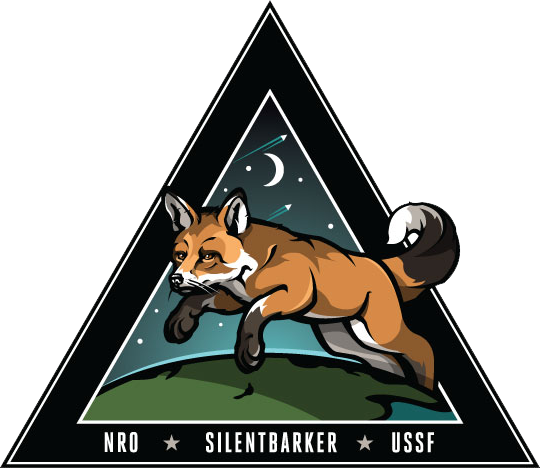
But it was not to be. Saturday’s launch attempt was scrubbed, “due to an issue found during a prelaunch ordnance circuit continuity check” and rescheduled for Sunday morning. The only meteorological point of note was a chance of violating the Cumulus Cloud Rule, induced by a coastal shower located directly above SLC-41.
“The board is green,” tweeted ULA CEO Tory Bruno, as the countdown entered its final half-hour. “Working no issues.”
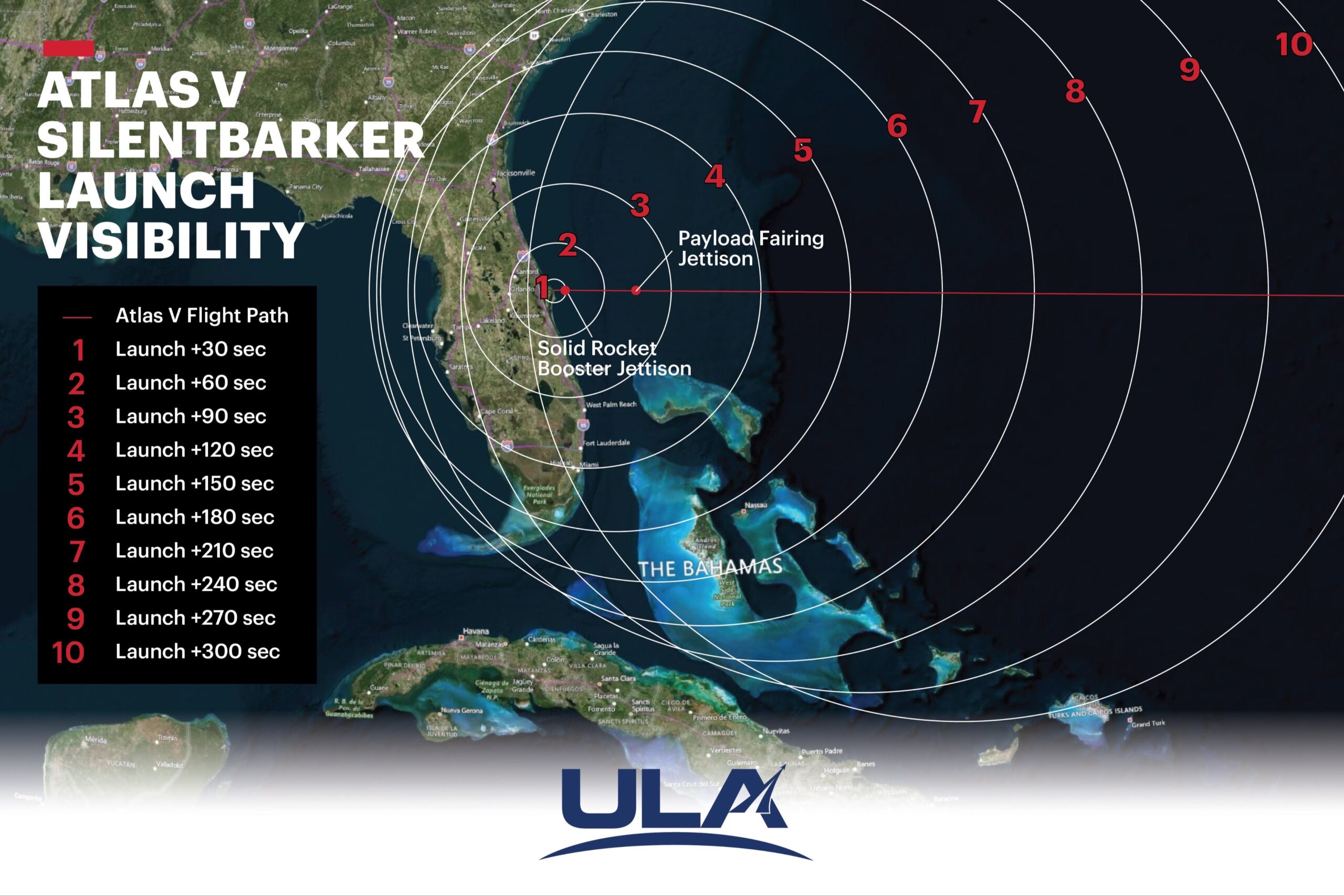
The Mighty Atlas went smoothly uphill at 8:47 a.m. EDT, her five GEM-63 boosters and the dual nozzles of her RD-180 engine burning hot and hard for the opening minutes of ascent. The five GEMs were emptied of their solid propellants and jettisoned about 104 seconds after liftoff, leaving the RD-180 alone to complete the remainder of the first-stage climb.
The payload fairing was discarded at just past three minutes, after which—per “the customer’s request”—coverage of the rest of the mission went silent…as silent and stealthy, perhaps, as Silent Barker itself will be.




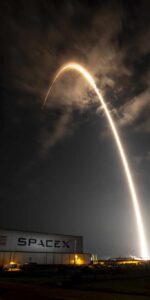

One Comment
One Ping
Pingback:ULA Launches Third Mission of 2023, Looks Ahead to Maiden Vulcan Flight - AmericaSpace